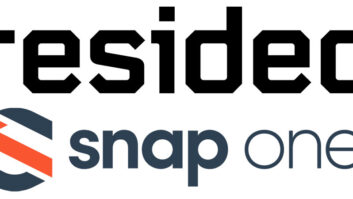The past year has been good for AV professionals. The industry has grown. A recent release illustrated this fact, showing double-digit annual growth for most of the top 100 custom integration companies. This raises an important question: how do you keep the momentum swinging in your direction when the economy slows down? The answer: by measuring success, recognizing failure, and moving on the goals that you set at the beginning of the year. On your own, this can be a daunting task, but that’s why there are software companies out there that specialize in creating the solid operational framework that makes driving growth possible at any time.

Image: Thinkstock
It all starts with process. Creating a scalable, repeatable process is easiest when you have a business management platform that has line-for-line integration into your accounting package. This means fewer hands have to be involved in your accounting and offers greater transparency regarding non-financial matters (such as project status) to everyone in your company. These benefits are compounded when the software also provides a single interface that can be used by each area of your company.
A comprehensive software solution will provide CRM, proposals, project management, scheduling, purchasing, inventory, payroll, change orders, and invoicing, all from a single integrated solution that is easy to use and avoids duplicate data entry. As a result, your business can be more efficient. If your current solution doesn’t put all of those eggs in one basket, it may be a POS (poorly operating software) platform, and you need to look at a more comprehensive solution.
Changing the software you use to run your entire business is not a decision that should be taken lightly. Doing so can be extremely disruptive and require extensive implementation and tweaking. The support you will receive from the new software company is as paramount to overall success as the upfront and maintenance costs. How can you determine if making a change is worth it? Will this change result in increased or decreased revenue?
Value is hard to estimate when it comes to software. How do you accurately predict the result of improved efficiencies and measure actual return? One way is to take a literal approach. Examine the annual revenue and employee makeup of your company. Break the revenue down into two parts: sales and service/installation. Service revenue can be calculated by multiplying your average labor rate by the efficiency factor of your technicians (the percentage of the total monthly payroll hours charged to customers).
Once you determine the portion of revenue attributed to service/installation, the remaining revenue is attributed to sales. To estimate the return on investment from purchasing a new software package, examine your current areas of inefficiency and conservatively estimate the time savings (efficiency increases) that are associated with each of the new software benefits. It is important to remain conservative here because unrealistic expectations could lead to disappointing results. Once complete, multiply this factor by the income associated with that revenue stream. A good solution will become profitable in less than a year and result in exponential returns every year thereafter.
By creating the framework for future growth, you are taking the first step toward actively managing the financial health of your company, improved efficiency, communication, and keeping the good times rolling even when the rest of the industry seems to be slowing down.







